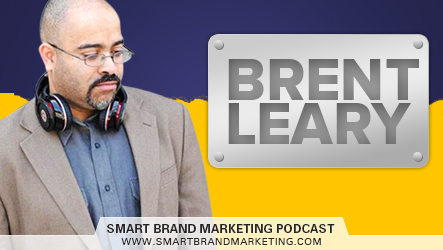Podcast: Play in new window | Download | Embed
Today’s Guest
Another Episode in the books!
Brent Leary joins the 35th session of Smart Brand Marketing.
We talk about how to use the tools available to get, keep and maintain our customer base.
Enjoy!
How to Improve Customer Retention with Customer Relationship Management
When you break it down to its basic components, you’d realize that customer service is actually divided into 2 phases. The first part is perhaps one that you are most familiar with as it involves you converting prospects into paying customers as well as building a strong customer base.
However, the second one is the more difficult phase as it will involve you trying to find ways to retain that customer base for as long as possible. When it comes to retaining customers, it’s recommended that you adopt a Customer Relationship Management system for your business. But before you can implement it, it’s best that you learn the basics of it first.
What’s CRM?
Customer Relationship Management, or CRM for short, is a management strategy that focuses on the relationship your business has with the customers it has earned. By design, it should help you maintain a strong connection with your customers while also improving the profitability of your business.
So, why is it exactly important? Your business actually thrives on having a good relationship with its customer base. It’s that important that even if you have a good business concept, you can’t expect to last long in the market if you can’t establish a decent relationship with the market. After all, they’re the ones buying your stuff and that won’t be likely if you turn them off with whatever strategy you employ for the business.
What does CRM Look like?
Actually, CRM does not adopt a single distinct form. When people talk about CRM, in fact, they can be talking about three things.
The Tech

CRM can take on the form of software meant to help businesses monitor and analyze customer interactions with the company. In most cases, this CRM is just a singular program although there is the possibility of companies using a series of CRM applications for their business.
The Strategy

This is also known as the CRM Philosophy and it simply involves the business integrating the concept into every part of their business administration initiatives.
The Process

This is the actual execution of all your CRM strategies with the aid of software and other analytical tools. It also entails the processes you use to evaluate your current relationship with your customers.
All in all, these three “aspects” form the greater Customer Relationship Management system. As such, it is best that you use all three aspects of CRM to get the best possible results in your business.
How Can You Benefit From it?
Make no mistake, CRM is actually a labor-intensive strategy. It requires to constantly monitor how your agents are interacting with your customers and vice-versa, taking not of any noticeable qualities in each encounter. It’s not even that lenient with mistakes as a single misinterpreted data can change the overall results.
At most times, it can even feel that the relationship is lopsided as your business has to do a lot of research to know your customers while your customers don’t have to exert a lot of effort at all as all the information they need about you is readily available online.
So what exactly do you get from all your troubles? Basically, CRM offers a number of benefits for those that do implement it in their business such as:
-
1. Better Internal Organization
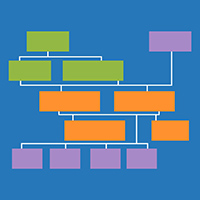
The more you interact with your clients, the more you will see where your business needs to be improved at organization-wise. For instance, you might have noticed that customers calling your business have a hard time getting their problems solved as your service representatives have to quickly move from one caller to another just to accommodate everyone. Of course, the most obvious solution here is to hire more customer service representatives or retrain your staff to better service your clients.
As far as database management is concerned, CRM software will allow you to access important files from a server without having to sift through tons of documents. This way, you and your staff will always have actionable data that you can use whenever you create better strategies.
-
2. Connecting with Customers Effectively
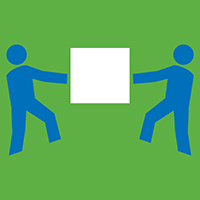
This is the main goal of why you adopted a CRM strategy in the first place. How it does this is two-fold. First, customer relationship management helps you understand your customers better. Once you understand your customer, you have a better idea as to what they expect from you. All that you have to do from that point on is to meet those expectations.
Next, it helps your staff become more responsive to changing customer needs and preferences. One of the drawbacks of conventional market research is that it is still to slow in analyzing and responding to changing customer behavior in the market. By the time that you have analyzed every data from the research, the market has moved on to other trends.
CRM does away with that by allowing your staff to respond in real time to any change in a customer’s behavior mid-transaction and offer an alternative solution to their problem.
-
3. Streamlining Processes
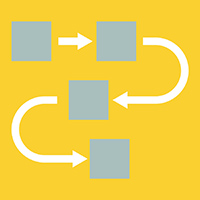
By helping you align with your customer’s needs, CRM should also help your business improve on its processes in order to reach new goals. For starters, manual and repetitive tasks can now be replaced with automated ones that can quicken the pace of work while also eliminating waste like duplication of tasks.
Next, it helps your staff avoid having to constantly adapt to new systems as most CRM interfaces are the same and build on present layouts with every new iteration. This can minimize downtime for your staff in having to relearn processes or, more commonly, having to relocate important buttons.
Lastly, it should help your staff communicate with each other more effectively as information through your CRM software should allow for seamless sharing of data while also addressing inter-department issues in real time. Simply put, your business’s workflow should be more efficient with the use of CRM Strategies.
With these, your business should find it easy to develop a more customer-centric business model that you can sustain for as long as you want to.
How to Implement CRM?
Regardless of what CRM tools you will use, you must realize that all of these can only do so much. As a matter of fact, you might be surprised that roughly 43% of businesses that implement CRM don’t even use the systems correctly.
This is where you strategy comes into play as it can make you reach your goals on time or not. Here are a few tips that can help you develop the best CRM strategy for your business.
-
1. Plot the Course
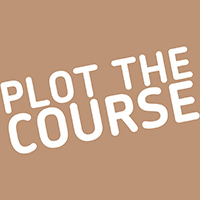
Since CRM is designed to help your company reach its goals, the first thing you must do then is to identify those goals. After identifying the objectives for your team to follow, the next step is then to identify how they will reach those objectives.
At this point of time, it’s important that you break down your plan to the minutest of detail possible. Divide major goals into smaller objectives and then create strategies, sub-strategies, and contingencies based on those goals.
-
2. Communication, Communication, Communication

Even if your CRM software is the most sophisticated out there when it comes to handling data, it’s still going to be wielded by a team of people who will operate with it from various departments.
As always, communications begins from the top and ends at the bottom. It’s your duty to lay out to your staff, as clearly as you can, the goals of the CRM strategy and what they can do to meet it. It also helps that you keep them involved in the strategic process. Not only will this smoothen communications with everyone but it will give your team some sense of ownership over the direction that the company is taking. In other words, invested employees make for effective ones.
-
3. Customers First
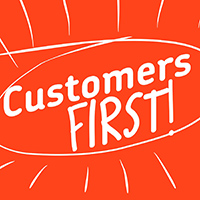
This, again, sounds like a no-brainer. Of course, you’d prioritize your customers since they will be the ones paying for your products and services. The question is, which of your customers should you prioritize? It’s easy to think that you can treat all your customers equally but, in a world as meritocratic as business, there is no such thing as equal treatment.
For instance, long-time customers are more valuable than occasional customers while the latter, in turn, is more valuable than new ones. Then, there is the issue of what qualities a customer should possess in your business. It’s up to your team to define what a customer is and then segment them according to their personality and buying habits.
-
4. Stagger the Changes

When your current system is not working, you might think that changing everything in order to minimize the damage. This not recommended as revamping your entire system can leave your workers overwhelmed with the changes. For the sake of productivity, you must introduce changes bit by bit to allow your staff to gradually condition themselves for the new system.
-
5. Do the Tracking Even Before the First Encounter
By design, CRM systems should collect and analyze date at every stage of the process. However, what a lot of businesses tend to do is implement the CRM well after the first few steps have been made. This meant that the CRM actually failed to do 20% of its work for the entire process.
Instead, what you will need to do is to use your CRM to catalogue the kind of information your prospects tend to share and consume in their social media channels or even their buying habits online. This way, you will have an idea on what your customer wants and how they expect for you to meet that want even before you have met them.
-
6. Always Evaluate
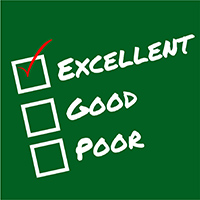
Like how you stagger changes in your system, you must also review your work at every stage of the process. The reason for this is that your CRM path will be considerably different from what others will experience. Your business will face its own set of challenges which requires for you to constantly evaluate your progress until you reach the final stage of the process.
Think of it as doing homework. You have the option to correct your mistakes as you go or wait for the entire thing to be finished before you start doing revisions. Guess which of the two options leaves you with more work to do at the end?
Another reason is that flaws tend to pop up at every phase of the process. If you wait for the end to address them, then you are not letting the CRM function at 100% at every point of the program. Always remember that knowing what’s not working is as valuable as knowing what does so be thankful for every opportunity given to you to identify the kinks in your own CRM strategy.
A Caveat
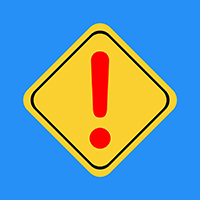
With all of the talk of CRM being this highly effective strategy to retaining your customers, you have to always remember one thing: It’s just a tool. On its own, it can only do so much for your business. In some cases, it’s not even that capable in helping your business reach its goals.
However, just like any tool out there, a CRM system can complement (or get complemented by) the performance of your administration tools and strategies. Combined with a well thought-of yet flexible CRM strategy, all of your CRM tools can help you identify what your customer needs and put those needs at the very forefront of your business’s service.
Give it enough time and a lot of effort and the CRM system you chose might just be the one solution you need to make sure that all those people you have converted as customers stay so for as long as possible.
Have you tried using customer relationship management strategies yourself? What other CRM techniques have you implemented in your business? The comments section down below is open for all sorts of discussion.
References:
https://www.preact.co.uk/why-crm/how-businesses-benefit-from-crm
https://www.salesforce.com/crm/strategy/
https://www.superoffice.com/blog/7-tips-to-a-successful-implementation-of-your-new-crm-system-2/
RESOURCES
- Brent Leary (Twitter | Blog)
- Marketing (InfusionSoft)
- Customer Service (Freshdesk | Zendesk | Desk | Groove HQ)
- Sales (SalesForce)
- Microsoft Dynamics
- Zoho
- Wetshaveclub.com
- The Profit
- Brent Leary (Twitter | Blog)
THANK YOU FOR LISTENING!
To get more SBM content sent directly to your device as they become available, you can subscribe on iTunes or Stitcher!
Also, reviews on iTunes are extremely helpful and greatly appreciated! I read each and every one of them, and feel free to share your URL there so I can contact you later on and say thanks!
If you enjoyed this episode you may also love listening to:

